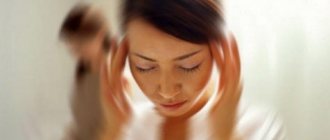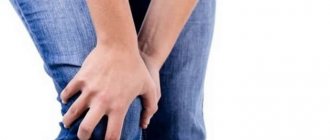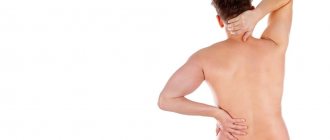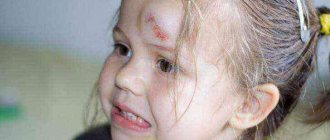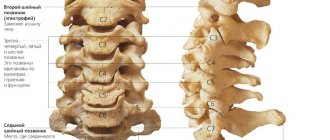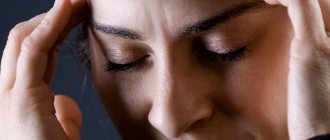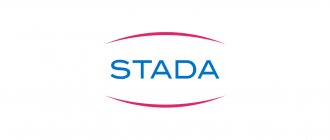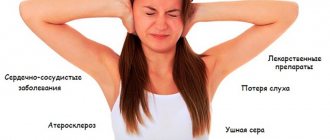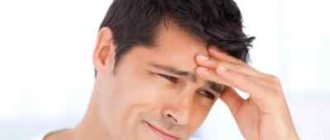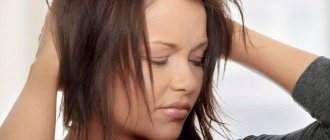When it comes to playing professional sports with VSD, doctors disagree. Some believe that competitive sports and vegetative vascular dystonia are incompatible things, while others, on the contrary, suggest that immersion in competition and sports excitement will distract from many manifestations of VSD and raise the overall tone of the body. There is no definitive answer to this question yet, but as for therapeutic exercises, breathing exercises and light physical activity or massage for VSD, all doctors agree: such exercises are necessary and absolutely mandatory!
Let's look at what you can do with VSD and what physical education will be most useful, and what sports it is better to refuse. General recommendations are as follows: exercises for VSD should be aimed at increasing physical activity, but you can play sports only as long as you like it, that is, as long as the load and exercise do not cause overexertion and severe fatigue. Healthy and stable sleep and a healthy diet are also important.
Basic recommendations for playing sports with VSD
As additional recommendations, I would like to note that it is not recommended to keep all kinds of diaries and systems for recording blood pressure or pulse after exercise. This develops additional suspiciousness and anxiety, and vegetative vascular dystonia is just waiting for this. In this case, the therapeutic effect of physical activity will decrease.
- A set of exercises for VSD should be composed correctly and begin with light loads. You should do physical exercise in comfortable clothes, preferably outside (in the fresh air). When you feel that your body can easily cope with light physical activity, you can gradually increase the intensity of the exercise.
- Gymnastics for VSD should be varied; it cannot be limited exclusively to dumbbells or barbells or athletic sports, such as running or race walking. It is important to combine various exercises, if possible, for all muscle groups.
- Strive to ensure that physical therapy for VSD brings only positive emotions. If you enjoy the process of physical education, and at the end of physical activity you feel pleasantly tired and satisfied, then you are moving in the right direction. With this approach, the VSD will not last long and will be forced to retreat!
- Unfortunately, with VSD, it is not recommended to engage in professional sports, especially in competitive games, where the result is important, not the process. Moreover, the type of activity is not at all important, be it football or chess. Because Our nervous system is most vulnerable during VSD; the fear of losing can provoke a panic attack or an acute attack of vegetative-vascular dystonia. Therapeutic gymnastics is therapeutic because it should bring benefit, not harm!
- You can play sports while listening to your favorite music; this additionally calms the nervous system and makes physical therapy even more useful. Fresh air and beautiful natural landscapes will provide an additional positive effect.
Of course, you must understand that these recommendations only apply if you have a diagnosis of VSD confirmed by a specialist.
You must be sure that all your organs are healthy and you can expose yourself to various stresses and perform physical therapy without harm to your health!
Training options for VSD
- Swimming;
- Running (this includes jogging, running or therapeutic walking over medium distances);
- Bicycle rides;
- Classic aerobics;
- Step aerobics (be sure to exclude strength elements and exercises);
- Morning exercises;
- Morning (or evening) contrast shower;
- Massage.
Exercises in the gym
If your heart belongs to the gym, and you can’t imagine your life without a “rocking chair,” then here are some recommendations regarding exercises on exercise machines or with dumbbells (barbells), which should help you not to aggravate the situation and add a therapeutic effect to your sports activities. The first and most important rule is - don’t chase records, physical activity should be moderate, remember the sport in our case is amateur.
Prohibited when playing sports in the gym:
- Interval training (aerobic-strength). Instead, you can do strength training with fairly short rest breaks (about 30-60 seconds) and medium to light weights. Remember - our goal is to treat VSD
, not overexertion; - If sports are not an empty phrase for you and you know the following exercises and training systems, then exclude Tabata classes, weightlifting, CrossFit, and any endurance exercises;
- One-, two-, or three-rep sets for maximum strength (at maximum weight);
- Always remember that you need to exercise correctly, avoid bending too much forward when doing squats with a barbell, or holding your breath while doing exercises. The pushing technique is also the enemy of our health and the friend of vegetative vascular dystonia.
Exercises for VSD at home
Therapeutic gymnastics can be easily performed at home.
Sport is one of the most accessible medicines; you can do physical exercise anywhere and at almost any time. Let's look at a set of therapeutic exercises that can be performed without any additional equipment. You can do this exercise every day! Exercise 1. Take the starting position, stand straight, place your feet shoulder-width apart. Place your left hand on your left thigh and extend your right hand forward. Describe 3-4 circles with your right hand; you need to start moving your hand upward. Repeat the same for your left hand.
Exercise 2. Stand up straight, arms down, feet shoulder-width apart. Start moving your right hand forward and up as you inhale, and at the same time move your left hand back. Bend your back slightly. Lower your arms to the starting position as you exhale. Repeat this exercise with alternating hands at least 5 times.
Exercise 3. Stand up straight, fold your hands in front of you with your palms. Start pressing your palms against each other, relax and lower your hands after 10-15 seconds. You can shake your hands and then repeat the exercise at least 5 times.
Exercise 4. Starting position: straight stand, arms extended forward. Clench your palms into fists with little effort. Swing your arms up and down like scissors. After 30-40 seconds, lower and shake your hands.
Exercise 5. Stand up straight, gently tilt your head to the right. Then slowly “roll” your head to the opposite side, and then return to the starting position. Repeat “rolling” your head in both directions at least 5 times.
Exercise 6. Place your hands on your shoulders in a straight stance. Raise your shoulders up and back a little, then begin to lower your shoulders down, describing a vertical circle with your shoulders until they return to the starting position. Repeat at least 5 times.
Exercise 7. Spread your legs wider than your shoulders, bend your arms at the elbows. Begin to turn your body to the right and left, alternately stretching the opposite arm forward at least 5 times in each direction.
Exercise 8. Stand on your left leg, bend your right leg slightly at the knee. Start rotating your foot, trying to describe a circle with the largest possible radius in each direction. Change your leg. Repeat at least 5 times.
Exercise 9. Stand on your right leg, bend your left knee at an angle of 90 degrees. Move your bent leg to the side as far as possible and make light springy movements. Then change legs. Repeat at least 5 times.
Exercise 10. In the starting position, the hands are placed on the belt. Raise your left leg bent at the knee, then straighten it so that your leg is as parallel to the floor as possible. Lower and change legs. It is necessary to repeat at least 5 times with each leg.
By repeating these simple movements, you can deal a serious blow to vegetative-vascular dystonia. Remember, sport is our main weapon against this disease. Sport and only sport can cure us of VSD completely and irrevocably. It doesn’t matter what exactly you do, the main thing is to regularly force your body to move, remembering to devote proper time to sleep, rest and nutrition.
Video lesson: effective exercises for VSD
If the video does not load, try refreshing the page (press F5 on your keyboard), this may help.
Our readers successfully use Artreid to treat joints. Seeing how popular this product is, we decided to bring it to your attention. Read more here...
Vegetative-vascular dystonia (VSD) and osteochondrosis are 2 separate pathologies, the manifestations of which are often correlated with each other. The symptoms and signs of these diseases are quite similar, which only complicates diagnosis.
The essence of the problem
General clinical signs of the course of diseases indicate some connection between them. The only difference is the root cause of the development of the pathological process:
- constant “jumps” in pressure;
- frequent headaches, dizziness and throbbing pain in the temples;
- blurred vision - blurred vision and spots before the eyes;
- difficulty breathing, inability to take a deep breath, accompanied by chest pain;
- arrhythmia - rapid heartbeat;
- in some cases - indigestion, accompanied by severe abdominal pain;
- tremor of the muscles of the upper and lower extremities;
- increased sweating;
- frequent fainting and loss of consciousness.
Vegetative-vascular dystonia and osteochondrosis differ in that in the first case the cause is a malfunction and irreversible disturbances in the functioning of the autonomic nervous system, and in the second - an increase in pressure and the appearance of other pathological symptoms that cause impaired blood circulation in the brain due to vasospasm.
Osteochondrosis develops after pathological damage to the cartilage of the spine, mainly to the tissues of the intervertebral discs. The localization of the disease divides the pathology into 3 types: lumbar, thoracic osteochondrosis and cervical osteochondrosis. The symptoms of VSD and cervical osteochondrosis are most similar, since disorders in the vertebrae pathologically change their structure - over time, almost all vessels and nerve endings located in the area of the pathological process are involved in the process, which causes spasm of the artery and, as a consequence, disruption of sufficient blood circulation to the brain .
Neuronal ischemia disrupts the hormonal balance responsible for the natural functioning of the body's autonomic nervous system.
As a result, the process of development of VSD progresses. With the development of cervical osteochondrosis, a process of disruption of innervation (providing organs and tissues with nerve cells) of almost all nearby organs, including the heart, occurs, which causes a number of clinical symptoms of the pathology. Often, patients perceive these signs as a threat to their life - this is how osteochondrosis potentiates the development of VSD.
Etiology of the phenomenon
The main root causes of the development of VSD, as doctors have established, are chronic pathologies of internal organs, previous infectious and colds, allergic reactions, stressful situations, neuroses, injuries and bruises of the head area, and excess weight.
The development of osteochondrosis and, as a consequence, VSD is influenced not only by internal, but also by external factors:
- Metabolism of the whole body and blood circulation, especially in the spine.
- Excessive stress placed on the entire spine or specific areas of it by excess weight or frequent heavy lifting.
- Spinal injuries, especially those sustained during difficult childbirth.
- Incorrect posture, sedentary lifestyle, staying in the same uncomfortable position for a long time.
The most common cause of osteochondrosis is weak back muscles and the inability of the spine to withstand optimal loads. When diagnosed with cervicothoracic osteochondrosis and VSD, the patient, as a rule, often experiences spontaneous panic attacks, there is a gait disturbance - unsteadiness and instability appear, changes in blood pressure, frequent headaches and general malaise appear.
All these symptoms are just the beginning of the development of the disease, since the pathological process causes disruption of the vestibular apparatus. If timely treatment is not carried out, the patient becomes extremely nervous and irritable. And VSD with osteochondrosis of the cervical spine provokes the development of other, also quite serious diseases.
And yet, it is quite difficult to say for sure that osteochondrosis is the cause of the development of VSD. What is certain is that these diseases enhance the manifestations of each other.
In particular, there is a psychological factor: even mild and insignificant pain that occurs during developing osteochondrosis is perceived by the patient too acutely, which significantly increases discomfort and complicates the treatment of the disease.
Diagnosis and treatment of pathologies
Since the symptoms of VSD and cervical osteochondrosis are almost the same, the main task in prescribing effective treatment is to accurately diagnose and differentiate the pathology. Problems with the spine are diagnosed using X-rays and MRI, and ECG, EEG of the brain and laboratory functional tests help determine VSD. In any case, consultation with a cardiologist and endocrinologist is also necessary.
Naturally, the main factors remain the clinical course of the disease and the patient’s complaints about the emerging symptoms of the pathology. The combination of all research methods and the results obtained help not only accurately diagnose the pathological process and the degree of its development, but also choose the most optimal treatment.
Depending on the diagnosis, a method of treating the disease is chosen:
- Drug treatment with drugs, which is especially relevant and effective during the period of exacerbation of osteochondrosis, aimed at alleviating pain, relieving tremors and muscle spasms, restoring blood circulation and eliminating developing inflammatory processes. Various means are used in treatment - tablets, injections, ointments, gels, creams, etc.
- Non-drug therapy most often includes physiotherapy courses, physical therapy, acupuncture, manual and reflexology, as well as special massage. Treatment is aimed at restoring impaired blood flow, eliminating swelling of the affected joints and relieving muscle spasms. It should be remembered that courses of special therapeutic massage can be carried out only during periods of remission of the disease. During the acute course of the pathology, massage is strictly contraindicated.
For VSD, sedatives and herbal infusions are necessarily prescribed.
Treatment of such pathologies is effective with the use of complexes of vitamins and minerals, drugs that enhance immunity. When treating pathologies, in combination with therapy methods selected by doctors, traditional medicine advice can also be effective:
- Compresses made from horseradish leaves are applied to sore joints - this is not only an excellent therapeutic, but also a preventive remedy that helps well with exacerbation of osteochondrosis. Compresses made from warm honey are effective, which should be rubbed into the affected and painful areas.
- You can use an infusion of celery root - the crushed plant is poured with boiling water, infused, filtered and taken 1 tsp. 3 times a day before meals.
In conclusion, it should be said about preventive measures that can prevent the development of VSD and osteochondrosis. To do this, you need to maintain a fairly calm daily routine, get enough sleep, and avoid excessive physical activity. It is very useful to go swimming, spend more time outdoors and perform fairly simple physical exercises. Women should not often wear high-heeled shoes or heavy bags.
Treatment of pathologies
It is impossible to eliminate the manifestations of vegetative-vascular dystonia without treatment for cervical osteochondrosis. All its symptoms will weaken or completely disappear at the stage of stable remission of the degenerative disease.
In the treatment of cervical osteochondrosis directly, drugs of various clinical and pharmacological groups are used. These are non-steroidal anti-inflammatory drugs, muscle relaxants, glucocorticosteroids, B vitamins, ointments with a warming and local irritant effect.
To eliminate functional disorders, patients are prescribed antidepressants, tranquilizers, and sedatives. A course of taking Glycine, Hopatenic and Glutamic acids, balanced complexes of vitamins and microelements can reduce the likelihood of panic attacks.
With pronounced manifestations of functional disorders, beta-blockers, psychostimulants, and antipsychotics are included in the therapeutic regimen.
In the treatment of cervical osteochondrosis, classic, acupressure, and cupping massage is used. Under mechanical influence, skeletal muscles relax, pinching of the vertebral artery and spinal roots is eliminated. Massage is an effective method not only for the treatment of osteochondrosis, but also for the prevention of its relapses.
Physiotherapeutic methods used in the treatment of cervical osteochondrosis also help get rid of the manifestations of VSD. Patients are prescribed magnetic therapy, laser therapy, UHF therapy, galvanic currents, and shock wave therapy. Neck pain caused by pinched spinal roots is treated well with applications of ozokerite and paraffin. And to normalize the psycho-emotional state and strengthen the body’s defenses, therapy with therapeutic mud and mineral waters is recommended for patients.
Therapeutic gymnastics and physical exercise are the most effective way to get rid of all neurological symptoms of cervical osteochondrosis, including panic attacks. Most often, a physical therapy doctor includes the following exercises in the complex:
- stand up, spread your feet shoulder-width apart, rotate your head first in one direction, then in the other;
- in a sitting position, place your palm on your chin, try to tilt your head, while offering resistance with your hand;
- Sit up straight, place your palm on your cheek. Tilt your head to the side, resisting with your hand. Repeat the exercise in the opposite direction.
All movements must be performed without jerking, smoothly, slowly, with a small amplitude.
For individual psychological correction, patients are recommended to regularly visit a psychotherapist or psychologist, including group sessions. The doctor explains that you cannot allow yourself to give in to fear, anxiety, and worry. It is necessary to realize that the attack is provoked by another relapse of cervical osteochondrosis, and therefore is not a threat to life.
Among the folk remedies in the treatment of cervical osteochondrosis and VSD, infusions of medicinal herbs with a mild sedative effect are used. To prepare them, pour a teaspoon of dry medicinal raw material with a glass of boiling water. After an hour, filter the infusion and take 100 ml up to 3 times a day. St. John's wort, motherwort, valerian, oregano, mint, lemon balm, and thyme have pronounced sedative activity.
Cervicothoracic osteochondrosis: causes of the disease
Osteochondrosis is a dangerous disease. When it manifests itself in the cervicothoracic spine, gradual destruction of bone tissue occurs, especially aseptic damage to spongy tissue. The danger of the disease lies in its long development: a person can be sick for years and not know about it. Most often, the disease is chronic and leads to disability.
- Symptoms of osteochondrosis
- How is osteochondrosis treated?
Symptoms of osteochondrosis
The difficulty of diagnosing a disease such as cervicothoracic osteochondrosis lies in the wide range of external signs of the disease, which can lead to incorrect interpretation and misdiagnosis. The first signs of osteochondrosis of the cervicothoracic spine are very similar to the symptoms of vegetative-vascular dystonia or variant angina.
This is due to the nature of the manifestations of the disease:
- heartbeat disturbance;
- dyspnea;
- pain in the chest and heart;
- dizziness and headaches;
- rapid pulse;
- low pressure;
- blue circles under the eyes;
- gray skin.
As a result of the diagnosis, we can come to the conclusion that we have a classic case of VSD, but the devices will record slightly different indicators. An ECG will show the presence of an erratic heart rhythm, but an inexperienced doctor may not take this into account and, based on other obvious symptoms, make a diagnosis: angina pectoris.
Only after a couple of years, when more obvious signs are added to these symptoms, experienced specialists may notice an incorrect diagnosis. Unfortunately, often by this time the disease has already become chronic. In this regard, it becomes almost impossible to completely cure the disease.
Of course, with the necessary care and quality treatment, the disease may not have significant manifestations. With the subsequent progression of degenerative processes of the intervertebral discs, the disease becomes open: it can be recognized by a set of symptoms.
Characteristic symptoms for osteochondrosis of the cervicothoracic spine are as follows:
- Constant headaches that cannot be relieved with medications. This is due to the nature of the pain: medications thin the blood and help improve blood circulation in the head, but if you have osteochondrosis, the pain will be the result of a load on the spinal cord.
- Asthenic syndrome. Severe fatigue and fatigue appear.
- Dizziness and so-called dark circles and spots before the eyes often occur, which is evidence of a semi-fainting state. Dizziness is a rather dangerous symptom, because the patient can lose consciousness at any moment.
- Changes in blood pressure. This symptom occurs as a result of poor blood circulation in the head area. It is associated with constant tension in the neck muscles, which bear a heavy load. Also, unstable blood pressure is associated with abnormal metabolism, which develops against the background of osteochondrosis, strengthening it. As a result, it turns out that one symptom comes out of the other, since they have the same cause - back disease, leading to abrasion of the intervertebral discs.
- Impaired upright posture and coordination of movements. This symptom occurs partly as a result of overload of the nervous system, partly due to severe pain that occurs during movement. As a result of disc wear, osteophytes begin to grow, which then dig into the muscles and bring terrible pain.
Tinnitus. Appears as a result of pressure changes. The vestibular apparatus reacts to intracranial pressure and makes itself felt by the sensation of extraneous noise in the ears.
- Neck hurts. This is due to excessive stress on the muscles.
- The appearance of goosebumps before the eyes. As a result of impaired blood circulation, oxygen starvation occurs, which leads to fainting.
- Cold hands and numbness in fingers. It appears at the first stage of the disease, but often this symptom is attributed to vegetative-vascular dystonia. In this case, this is not a gross mistake, because the nature of this symptom is always the same, regardless of the disease: poor circulation.
- Aching dull pain in the shoulder girdle and arms. The most obvious symptom characteristic of this particular disease. Localization of the disease in this particular area creates severe discomfort, which will only intensify as osteochondrosis progresses.
- Sore ribs. The patient may complain of itching and pain in the ribs. This is especially true when moving. Even with static work of the spine, a tingling sensation is felt in the ribs.
- Pain in the chest and heart area. Osteochondrosis curves the spine, which also affects the chest. Another reason is the destructive processes of improper metabolism. To relieve pain and chest compression, you need to adjust your diet and perform therapeutic exercises.
- Rachiocampsis. A clear symptom. Using palpation, an experienced doctor can easily identify spinal disorders.
- drug therapy;
- herbal medicine and dietary supplements;
- therapeutic exercises, massage, reflexology.
The main rule for the patient: do not despair. The correct diagnosis is half the treatment! Of course, it is important to prepare yourself for long-term treatment.
Typically, osteochondrosis in this part of the spine is characterized by attacks of pain that occur periodically. As the disease progresses, such relapses occur more frequently. The pain symptom intensifies during sudden changes in body position, when turning the head or bending the neck. Another symptom indicating the disease is snoring. It occurs due to constant tension in the neck muscles, which do not relax even during sleep.
Periodic toothaches may also occur, and there may even be a burning sensation of the skin on the neck and head. The pain is often accompanied by nausea and dizziness. If the disease is not treated promptly, this can lead to compression of the vertebral artery by osteophytes, which can lead to the development of brain disorders. It is precisely because of these symptoms that osteochondrosis of the cervicothoracic spine is confused with vegetative-vascular dystonia.
How is osteochondrosis treated?
Treatment of this disease is almost impossible in the final stages, so it is best to start early. Osteochondrosis can be easily slowed down in the first stages. Unfortunately, it is impossible to completely recover from it. To prevent the disease from progressing, it is necessary to completely change your lifestyle: go on a special diet, do therapeutic exercises, periodically undergo a course of treatment and consult with your doctor. You also need to be attentive to climate change, so when going to a resort, inform your doctor. Let a specialist advise you on vitamins or medications.
Treatment includes:
First of all, the patient is prescribed painkillers and anti-inflammatory drugs. Usually these are non-steroidal drugs aimed at relieving pain symptoms. It is also very important to remove the inflammatory process that stimulates the destruction of intervertebral discs.
Next, corticosteroids must be prescribed. These are drugs that are administered as injections. They are able to restore cartilage tissue and participate in the metabolism of bone tissue. Thus, doctors stop progressive osteochondrosis. Corticosteroids can potentiate the effect of analgesics, which makes it possible to reduce the dosage without compromising effectiveness.
Dietary supplements are also part of the treatment. The use of active additives and herbal remedies can improve the condition of bone and muscle tissue. Dietary supplements have a positive effect.
Ointments and gels are also often used. I would like to immediately warn you that the use of many of them does not affect the treatment process and does not help your spine at all. The maximum that ointments can do is improve the condition of the skin. No matter what you hear in commercials and in the pharmacy: don’t believe it, they won’t help.
In addition to drug treatment, the patient will definitely have to undergo therapeutic exercises and physiotherapeutic procedures. They will have a positive effect and help you forget about the disease.
I would like to know to what extent sanatoriums for the treatment of scoliosis justify their purpose. Is it worth paying that kind of money for a month-long stay or is it better to spend money on a good massage therapist or chiropractor?
Thanks for the interesting and relevant question. Indeed, when choosing sanatoriums for the treatment of scoliosis, a person is first of all stopped by the somewhat inflated price of services. This approach of these institutions is due to the need to maintain qualified specialists and technological equipment on staff.
Our answer does not pretend to be true, because each doctor assesses the need to use certain methods of treating a patient on the basis of practical and theoretical skills, as well as after an individual study of the characteristics of the pathology.
If the patient is interested in quality at an affordable cost, we can suggest sanatoriums in neighboring countries. For example, the Belarusian sanatorium “Rainbow” receives positive feedback from our patients.
Our readers successfully use Artreid to treat joints. Seeing how popular this product is, we decided to bring it to your attention. Read more here...
Among the domestic options, the Polushkino hospital-sanatorium, where qualified physical therapy instructors work, can offer. The cost of their services is reasonable.
In both institutions, scoliosis is not corrected, but only its development is stopped. This is understandable, since it takes at least a year to completely correct the deformity, and a person spends only a few months in a sanatorium. Similar features characterize the “Tourist” in the Moscow region, the orthopedic sanatorium of Svetlogorsk, Kaliningrad region.
These medical institutions have an acceptable price range and quality services.
Of course, if a person doesn’t mind spending money for their health, we can recommend Gelendzhik, where they accept children from 3 to 14 years old. The Krupskaya sanatorium in Evpatoria is rightfully considered one of the most equipped. There are several types of exercise therapy, electro- and mud therapy, thermal and water treatments, massage, physiotherapy and many other procedures useful for scoliosis sufferers.
For patients with S-shaped curvature of the spine of 2 and 3 degrees, we recommend professional institutions. For example, the rehabilitation center for pediatric traumatology and orthopedics “Ogonyok”.
VSD - vegetative-vascular dystonia is manifested by many different symptoms, some of which are similar to those observed in related pathologies. The main difference between the disease is that the disease does not provoke internal changes in the body.
- Content:
- Causes and manifestations of VSD in osteochondrosis
- Does osteochondrosis lead to VSD?
- Treatment methods
- How to distinguish osteochondrosis from VSD
Vegetative-vascular dystonia against the background of cervical osteochondrosis is dangerous because the characteristic manifestations of VSD (headache, narrowing of the lumens of blood vessels, decreased blood flow to the brain) are significantly enhanced due to pathological changes in the structure of the spine.
Osteochondrosis and vegetative-vascular dystonia: features and relationship
Osteochondrosis is manifested by degenerative-dystrophic changes in the spinal column.
The main damage occurs to the intervertebral discs. Gradually they lose moisture and elasticity, which leads to loss of decompression function. The vertebrae shift as the space between them decreases. When pathological changes are localized in the neck, blood vessels supplying the brain or nerves are compressed. In the second case, irritation of the nerve roots emerging from the spinal column causes muscle spasm, causing pinching of the arteries. As a result, cerebral circulation is disrupted. Cerebral ischemia leads to insufficient synthesis of hormones necessary for the nervous system, which causes autonomic failures.
The connection between VSD and osteochondrosis of the cervical spine is direct, but sometimes a similar problem occurs due to compression of nerves and vessels in the chest area. In this situation, disruptions occur in the innervation of internal organs. Against the background of the resulting disorder, pain in the spine radiates to nearby tissues, including the heart. The patient perceives the manifested discomfort as a dangerous disease and begins to get nervous. Over time, panic attacks lead to the development of neuroses and vegetative-vascular dystonia.
Osteochondrosis develops in the neck, chest and other parts for the following reasons:
- staying in one position for many hours;
- age-related changes in intervertebral discs;
- congenital malformations of the spine and blood vessels;
- back injuries.
The development of degenerative-dystrophic changes can be accelerated by an unhealthy lifestyle, hard work, and participation in strength sports that require lifting large loads. The manifestation of vegetative failures is directly influenced by stress, metabolic disorders and endocrine disruptions.
Causes and manifestations of VSD in osteochondrosis
It would be more correct to consider that vegetative-vascular dystonia and cervical osteochondrosis are two separate diseases in which the symptoms and manifestations are of a general nature and often overlap each other and complicate diagnosis.
Characteristic manifestations of VSD are:
- Headache. The intensity and nature of the sensations are identical to what happens during migraine attacks.
- Dizziness. Lack of normal blood supply leads to oxygen starvation and, as a result, signals itself with nausea and other manifestations. Most often, dizziness is short-term.
- Well-being. Lack of blood supply leads to the patient experiencing chronic fatigue, apathy, and mood changes. Pain in the head makes a person irritable. Normal sleep is disrupted, problems with memory and concentration are observed.
Vegetative-vascular dystonia with osteochondrosis occurs in 90-95% of cases of seeking help from a doctor for chronic headaches. Since VSD is a consequence of disturbances in the functioning of the body, after eliminating disturbances in the cervical spine, improvements occur, and the manifestations of dystonia gradually decrease.
What to do if you have a panic attack?
If problems with the cervical spine and VSD have gone so far that a person has developed panic attacks, it is worth remembering one important thing: a panic attack always goes away on its own, without any influence. Usually panic goes away within half an hour; in extremely rare cases, the body needs 40-50 minutes. Therefore, no matter how difficult and scary it is, remember: this condition will definitely pass in the very near future. The same information is useful for the patient’s relatives to know.
Why does it start? Here, a lot depends on the psyche: a person may find himself in a place that is unpleasant for him (panic attacks often appear in noisy, crowded places, when the load on the nervous system is high). Perhaps something scared him or reminded him of unpleasant memories. There can be many reasons! Finding the mechanism that triggers a panic attack can be an effective method. But it is used only in individual work with a psychotherapist, so there cannot be any specific recommendations here. Observe yourself, remember your reactions, look for a good specialist - and your problem can be effectively solved with the help of psychotherapy.
But if the attack has already begun, it is important to take the patient by the hands, calm him down, repeat something distracting in an even, dispassionate voice - for example, count, offer to do breathing exercises, or calmly tell him that his condition is not dangerous. This is only a reaction of the nervous system to some pathogen, and all unpleasant symptoms will pass in the near future. Read about where lice come from on our website.
Does osteochondrosis lead to VSD?
Treatment methods
Vegetative-vascular disorders, unlike problems with the spine, develop as a result of external factors: stress, emotional disorders and depression. Osteochondrosis begins with metabolic disorders, injuries, etc. Therefore, standard drug treatment may not have the desired effect.
Treatment methods for VSD with osteochondrosis in the cervical spine involve eliminating the factors that provoked the development of the disease. Therefore, when prescribing a course of treatment, the doctor will first of all take care of restoring the normal functioning of the spinal column.
For these purposes, the following therapy methods are traditionally used:
- Purpose of NSAIDs - drugs relieve inflammation and reduce pain, eliminating spasm. This allows the body to restore lost functions: mobility, normal metabolism.
- Gymnastics and manual therapy. VSD with widespread osteochondrosis of the cervical spine manifests itself in a way similar to spinal disease: headaches, dizziness, vomiting, a drop or increase in blood pressure. Moderate physical activity and massage can reduce the intensity of symptoms and restore a normal rhythm of life.
- Physiotherapeutic procedures. Magnetic therapy, acupuncture, treatment with leeches - all this, to one degree or another, affects the patient’s well-being. The intensity and frequency of crises due to osteochondrosis decreases.
As for VSD, therapy for this disease should include the prescription of sedatives and drugs to combat depression. Also, for dystonia, a visit to a psychologist is recommended.
How to distinguish osteochondrosis from VSD
Signs of VSD in cervical osteochondrosis practically do not stand out against the background of symptoms characteristic of disorders of the spinal column. The only significant difference is the etiology of the disease.
As a rule, osteochondrosis is the first to appear. Subsequently, changes lead to the development of dystonia. Osteochondrosis affects VSD, being a factor provoking the onset of the disease.
Without proper treatment, the symptoms of dystonia gradually become more intense and lead to certain restrictions in the patient’s life. Osteochondrosis also requires adequate therapy. Self-medication is unacceptable!
How to relieve the symptoms of osteochondrosis in the heat
The main way to improve well-being in the heat is medication. The first thing you need to do is contact a neurologist.
In cases of severe pain and poor general health, bed rest (3 weeks) is recommended, medications are prescribed in the form of injections, and diet is followed. As the manifestations of the disease subside, they switch to tablets, and physiotherapy sessions are recommended. After achieving sustainable relief, the patient is transferred to a general regimen, massage procedures and therapeutic exercises are prescribed.
| Drugs that help relieve the symptoms of osteochondrosis in the heat | Effect | |
| Improving blood flow | Piracetam | Accelerates the supply of oxygen and beneficial elements to the tissues of the brain and cervical spine |
| Cavinton | ||
| Cinnarizine | ||
| Muscle relaxants | Tolperisone | Muscle hypertonicity disappears |
| Baclofen | ||
| Mydocalm | ||
| Neuroprotectors | Cerebrolysin | Energy processes in the brain improve, its resistance to hypoxia increases |
| Actovegin | ||
| Nonsteroidal anti-inflammatory drugs | Lornoxicam | Inflammatory processes, tissue swelling are reduced, pain syndrome is reduced |
| Diclofenac | ||
| Celecoxib | ||
Additionally, B vitamins are prescribed, and, if necessary, antidepressants and sedatives.

